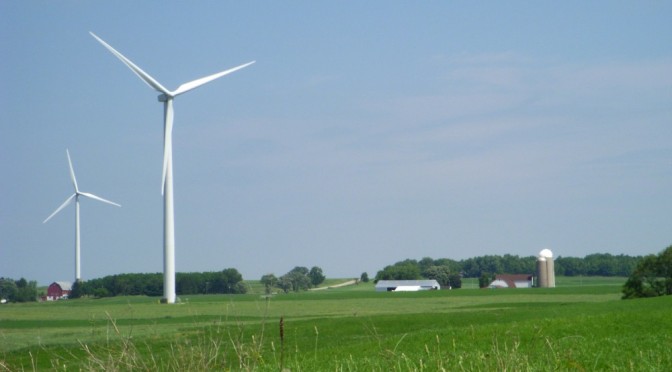The U.S. Department of Energy’s recently released “Wind Vision” report features benchmarks that can inspire our industry to realize robust growth. To achieve those benchmarks – specifically, 20 percent of the nation’s electricity mix coming from wind by 2030 and 35 percent by 2050 – the wind industry will likely tap new opportunities that it’s already been working to develop. In fact, the race is on as to which market area will become the biggest wind energy driver. Here are four such rapidly maturing opportunities that can fuel continued industry growth.
Offshore. It’s no secret that the potential for offshore wind energy development is great, and at last, the U.S. offshore wind energy era has officially begun. Construction has started on the first U.S. offshore project, Deepwater Wind’s Block Island Wind Farm. The Wind Vision assumes 3 gigawatts (GW) of new capacity will be built offshore by 2020, 22 GW by 2030, and 86 GW by 2050.
Technology-enabled markets. As for land-based wind energy, the industry’s continually advancing technology has meant that areas of the country previously considered unsuitable for development now have projects in the works. Taller turbines and larger rotor diameters are opening up locations in the Southeast and other areas of the country. My company, Apex Clean Energy, is developing a project in a part of coastal North Carolina where developers would not have shown interest several years ago. Today, several leading developers are active in similar areas.
Transmission. Also presenting a big opportunity for wind energy is transmission. Lines built under Texas’ Competitive Renewable Energy Zone (CREZ) initiative illustrate the ability of new transmission to spur a tremendous amount of wind energy development. Approximately 7,500 MW of wind projects are currently under construction in Texas, according to AWEA’s U.S. Wind Industry Annual Market Report for 2014, while other parts of the country are also becoming more active in building new transmission to link wind supply with distant energy demand centers.
Repowering and retrofitting. In any industry, companies will tap the most abundant resources first, and wind energy, of course, has been no different. Today that means older turbines often found in prime locations can be replaced with turbines boasting the latest technology and having higher rated capacities, resulting in significant net megawatt gains.
Which of these emerging market opportunities will grab the biggest share of wind energy development? Participants—both audience and panelists—in one particular session at WINDPOWER 2015 Conference & Exhibition will tackle that very question. At the session, “The Next Frontier for Wind: Four Competing Cases from Leading Developers” (May 19, 1:30 p.m.), four prominent panelists with expertise in each of those respective areas will make their case. Audience members, who will be polled both before and after panelists make their cases, will ultimately decide which market segment has the strongest case.
Providing the offshore perspective will be Deepwater CEO Jeff Grybowski, while Brian Healer, Director of Energy Resource at RES Americas, will discuss lower-wind markets being opened up by today’s technology.
Jayshree Desai, COO of Clean Line Energy Partners will share insights on opportunities that transmission can unlock, and discussing the growing market of repowering will be EDF Renewable Energy Director of Wind Business Development Rick Miller.
Which market segment presents the greatest opportunity in the coming years? Let the WINDOPWER 2015 audience decide.
WINDPOWER 2015 takes place May 18-21 in Orlando, Florida. Go to windpowerexpo.org for more information.
Tyson Utt is Director of Development for the Mid-Atlantic at Apex Clean Energy, Inc., and session chair for “The Next Frontier for Wind: Four Competing Cases from Leading Developers” at WINDPOWER 2015.

